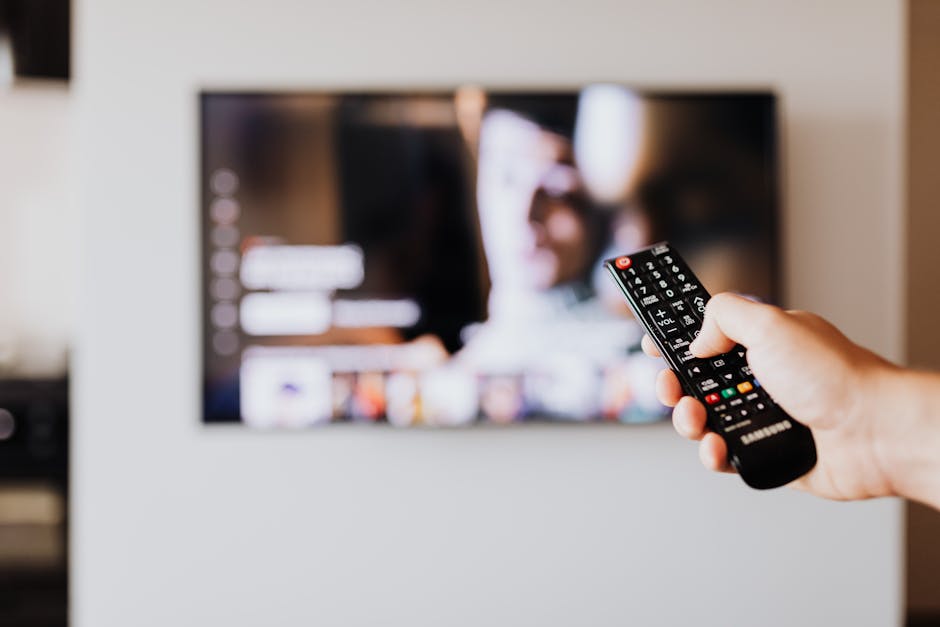Introduction: Why Podcasts Are Booming
Podcasting isn’t new, but its growth over the last few years has been anything but subtle. What started as a corner of the internet for hobbyists and late-night ramblers has surged into a full-blown media movement. In 2024, podcasts are pulling in massive audiences across every genre—from deep-dive history series to daily mental health check-ins—and production quality now rivals traditional radio, with entire teams working behind the scenes.
So what’s fueling all this? For one, platforms like Spotify, Apple, and even YouTube have doubled down on podcast support, offering better monetization tools and algorithmic boosts. Add in the rise of mobile-focused lifestyles—people listening while commuting, cooking, or working out—and the draw of audio becomes obvious. It’s screenless, flexible, and intimate.
Bottom line: podcasting didn’t just survive. It evolved. And in 2024, it’s no side hustle. It’s serious business.
The Democratization of the Mic
It’s never been easier to start a podcast. You don’t need a fancy studio or a team of producers. Just a mic, a quiet room, and something worth saying. Hosting platforms are cheap (some are free), and tools for editing and publishing are built for speed, not complexity. For creators, that means one thing: freedom.
Audio removes a lot of roadblocks. No camera setup, no perfect lighting, no pressure to look the part. That opens the door to voices that might not thrive in visual-first platforms. Podcasters are leaning in to deeply personal, hyper-niche content—from budgeting tips for first-gen students to cozy horror storytelling to deep dives on obscure 90s anime. Each of these corners of the internet may be small, but they’re mighty—and global.
This low barrier to entry, combined with people’s growing appetite for authentic content they can consume on the go, is why podcasting feels both old-school and next-gen. It’s easier to build trust when you’re literally in someone’s ear. And with fewer gatekeepers and more access, creators are owning the conversation in ways that are hard to ignore.
Impact on Media Consumption
We’re not just watching less—we’re listening more. As screen fatigue sinks in, especially after years of video-first everything, podcasting has quietly become the go-to format for millions. It’s not flashy. It doesn’t fight for your eyes. Instead, it fits into life: during commutes, workouts, dishes, or downtime. People don’t have to stop what they’re doing to catch a good story or learn something useful.
Audio content leans into multitasking, and that’s a winning trait now. But beyond convenience, there’s something else happening: connection. A voice in your ears builds familiarity faster than a face on a screen. It’s stripped-down, direct — and in a world of hyper-curated video feeds, it feels refreshingly human.
For both listeners and creators, the shift to audio isn’t just functional. It’s emotional. Trust is harder to fake with just your voice. That authenticity resonates. It earns loyal followers. And more than that, it keeps them coming back.
Monetization and Business Models
Podcasting has matured beyond passion projects—it’s become a viable business model for creators. As listenership grows, so does the array of ways podcasters are generating revenue. Let’s break down the main monetization methods driving this audio-first economy.
Primary Revenue Streams
Successful podcasts typically rely on a combination of income sources:
- Sponsorships: Brands pay to be mentioned or integrated into podcast episodes. These can range from host-read ads to mid-roll placements and branded segments.
- Programmatic Ads: Automated ads inserted into shows based on audience data, often through podcast networks or hosting platforms.
- Listener Donations: Many creators invite fans to support them directly using platforms like Patreon, Ko-fi, or Buy Me a Coffee. These micro-donations build recurring revenue and community loyalty.
Subscription Platforms and Premium Content
With innovations in podcast distribution, creators are now offering exclusive content behind paywalls.
- Apple Podcasts Subscriptions and Spotify’s Paid Subscriptions are lowering the barrier for monetizing content natively on listening platforms.
- Premium Tiers: Creators often offer ad-free episodes, bonus content, or early access to paying subscribers.
- Private Feeds: Platforms allow podcasters to create members-only RSS feeds for superfans who want more in-depth content.
The Rise of Podcast Networks and Agencies
Professionalization is reshaping the ecosystem:
- Podcast Networks: These groups help creators with editing, marketing, monetization, and audience development in exchange for a revenue share. Examples include Wondery, Earwolf, and iHeartPodcast Network.
- Production Agencies: Brands and organizations are hiring agencies to build and manage podcasts as owned media channels.
- Collaborative Growth: Being part of a network or agency increases discoverability, improves quality, and opens up larger sponsorship deals.
Podcasting today is more than just a microphone and an idea—it’s a multifaceted business with real earning potential. Whether independent or part of a network, creators have more tools than ever to turn their voice into income.
Tech is Fueling the Fire
What once took hours of sound mixing in a closet studio can now be pulled off in minutes. Thanks to streamlined audio editing tools like Descript and Hindenburg, podcasters are spending less time tinkering and more time creating. Hosting platforms like Buzzsprout, Transistor, and Spotify for Podcasters are cutting the hassle with analytics, scheduling, and monetization infrastructure baked in.
Dynamic ad insertion is another gearshift. Podcasters can now drop in time-sensitive promos or tailor ads by region, interest, or listener behavior—without having to re-edit the full episode. Flexibility meets scale, and creators are finally getting options that used to be reserved for big media.
AI is also stepping up. Auto-transcription tools are cleaning up post-production workflows. Content repurposing—like turning a 45-minute show into blog posts, clip videos, or social teasers—is less of a grind with platforms that automate the heavy lifting while keeping your voice intact.
The next frontier? Immersion. There’s a growing intersection between audio and emerging tech. Think AR visual overlays while listening to a on-location episode, or VR podcasting roundtables where you don a headset and sit with the hosts. It may still be early days, but the lines between formats are starting to blur.
Curious how AR is changing things? Check out: How Augmented Reality is Revolutionizing Media Engagement
Challenges Facing Podcasters
Getting a podcast off the ground in 2024 isn’t hard. Standing out is. With over five million shows now available globally, discovery has become one of the biggest hurdles. New creators are competing not just with independent voices—but with full-scale media companies pouring big budgets into production. Ranking on platforms like Apple Podcasts or Spotify means getting smart fast: SEO-optimized titles, compelling cover art, and strategic episode placement matter more than ever.
For first-time creators, the tech learning curve is still real. From picking the right mic to mastering audio levels, editing software, and hosting platforms—there’s ground to cover before you launch your first episode. And while gear is cheaper and software more intuitive than ever, the hunt for a clean, consistent production process is often trial and error.
Consistency is the final beast. Listeners crave routine. Algorithms reward it. But building regular content while handling interviews, scheduling, recording, editing—and maybe promoting solo—burns people out fast. The podcasters who last are the ones who treat their show like a system, not a passion project. They build calendars, batch episodes, and know when to hit pause. Showing up matters, but sustainability decides whether you last.
Where Podcasts Go Next
As we move deeper into the digital age, podcasting is not just evolving—it’s expanding into entirely new experiences. From smart devices to real-time video integrations, the podcast format is moving far beyond the solo microphone.
Smarter Listening: Podcasts in Everyday Tech
Podcasts are becoming a seamless part of daily routines, thanks to smarter integrations across tech platforms.
- Smart Speakers & Devices: Listeners can now access podcasts with simple voice commands on devices like Amazon Echo, Google Nest, and Apple HomePod.
- In-Car Ecosystems: Automotive apps like Apple CarPlay, Android Auto, and native infotainment systems are making podcasts a preferred choice during commutes.
- On-the-Go Discovery: Personalized podcast recommendations are being built into digital assistants and mobile notifications.
These changes mean that podcasts don’t just live in apps—they live wherever you are.
The Rise of Hybrid Formats
Audio isn’t flying solo anymore. We’re seeing the emergence of blended content formats that merge voice, video, and community-driven interaction.
- Podcast + Video: Many creators are now filming their episodes to expand to platforms like YouTube and TikTok.
- Podcast + Live Audience: Live tapings via platforms like Zoom or even in physical venues are boosting engagement and content reuse.
- Cross-Platform Publishing: One podcast episode can now be shared as a traditional audio file, a YouTube video, a LinkedIn clip, and more.
This format mixing boosts discoverability and gives audiences options for how they like to consume content.
Data, Targeting, and the Age of Voice SEO
As podcasting matures, so do the analytics and optimization tools that power it.
- Smarter Analytics: Platforms are offering better data on listener retention, location, and behavior, helping podcasters tailor content more effectively.
- Voice-Based SEO: With the rise of smart assistants, optimizing for voice search is becoming crucial—podcast titles, descriptions, and metadata now play a role in discoverability.
- Precision Targeting: Dynamic ad insertion and audience segmentation are making podcast advertising more intelligent and more profitable.
We’re entering a phase where audio doesn’t just play—it performs. And creators who understand this evolving toolkit will have a major edge.
Podcasting isn’t staying still. It’s becoming more integrated, interactive, and intelligent—with a stronger grip on both our devices and our attention.
Final Take
We’re not just seeing another “content trend.” This is a reset. The way stories are told, shared, and heard has shifted. Podcasting isn’t the side project it once was—it’s a format with serious staying power. For creators and brands, it’s become a direct line to an audience that opts in fully—ears open, distractions down, real attention given.
Forget waiting for algorithms to boost your visibility. With audio, it’s about showing up with real conversations, sharp ideas, or simply something worth saying. The low production barrier and flexible format open the door for experimentation and creative freedom. And the demand? Still growing.
This isn’t the time to sit it out.
The mic is open. The audience is listening.




